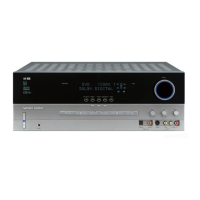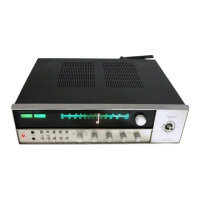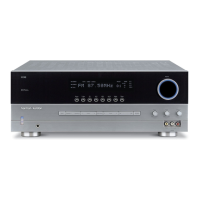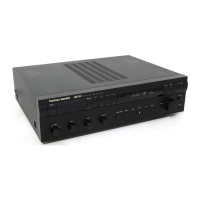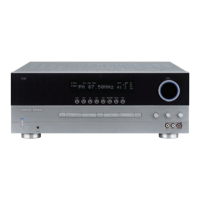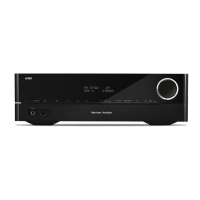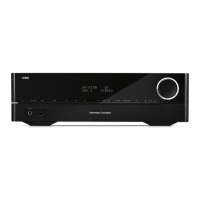Rear
Panel
-
Video
Connections
[i1
VCR
1
Audio
In:
Connect these
jacks
to
the audio PLAY/OUT jacks
of a
VCR.
I!]
VCR
1 Audio
Out:
Connect
these jacks
to
the RECORD/IN audio
jacks of a
VCR.
DJ
VCR
1
Video
In:
Connect this
jack to the composite video
PLAY/OUT jacks of a
VCR.
(D
VCR
1 Video
Out:
Connect this
jack to the composite video
RECORD/IN jacks of a
VCR.
GI
VCR
1 S
Video
Out:
Connect this
jack to the "S" video RECORD/IN
jacks of a
VCR.
GI
VCR
1 S Video
In:
Connect this
jack to the
"S" video RECORD/IN
jacks of a
VCR.
Infonnation
Display
00
VCR
2
Audio
In:
Connect these
jacks to the audio jacks PLAY/OUT
of a second
VCR.
GI
VCR
2
Audio
Out:
Connect
these jacks to the audio RECORD/IN
jacks of a second
VCR.
D
VCR
2
Video
In:
Connect this
jack
to
the composite video
PLAY/OUT jacks of a second
VCR.
II
VCR
2
Video
Out:
Connect this
jack
to
the composite video
RECORD/IN jacks of a second
VCR.
13
TV
Audio
In:
Connect the audio
outputs of a
TV,
cable converter or
satellite receiver to these jacks.
[I
TV
Video
In:
Connect the com-
posite video output of a
TV,
cable
converter or satellite receiver
to
this
jack. The signals received at this
jack are also used to trigger the
"TV
Auto-On" feature.
M:.00Tl.US[l2e/&llr!
[]
Ul
ml
LO
Audio
In:
Connect the audio
output of a laser disc player to these
jacks.
11]
LO
Video
In:
Connect the com-
posite video output of a laser disc
player to this jack.
[!]
LO
S Video
In:
Connect the "S"
video output of a laser disc player to
this jack.
Iii
TV
Monitor
Video
Out:
Connect
this jack to the composite video
input of a
TV
monitor
or
video pro-
jector to view the on screen control
menus and output of the receiver's
video switcher.
[!I
TV
Monitor S Video
Out:
Connect this jack to the S video
input of a
TV
monitor
or
video pro-
jector to view S video sources
selected
by
the receiver's video
switcher.
I
STEREO
I
dB
kHz-
MHz
Jal"
Indicator:
These indica-
)lay which input source
is
d
to
the
video monitor
output
: This indicator flashes when
ut
levels are being set using
in test signal generator.
0 Stereo: This indicator lights
when
an
FM
station is broadcasting
in
stereo.
@
Volume
Indication: The last two
indicators on the information display
indicate the volume level. Note that
□
dB
is the reference level, not
an
indication that there is no output.
0
Main
Information
Display:
This
ten digit display shows messages
relating to the status, input source.
surround mode,
tuner,
volume level or
other aspects of the unit's operation.
@ Auto
Memo:
This indicator flash-
es when the tuner is automatically
scanning for stations and entering
them into the preset memory.
10:
This indicator flashes
e
Memo
button is pressed
1terlng
presets and other
ion into the tuner's memory.
,:
This indicator signifies that
,matic Tuning mode is in use
,roadcasts.
id:
This indicator lights when
1r
FM
station is properly
ld
locked.
0
Tuner
Frequency Indication:
When the tuner is
in
use, the main
Information Display will show the
preset channel number, if
any,
the
frequency band and the station
fre-
quency. Indicators at the right side
of the display show
kHz
when an
LW
or
MW
station is tuned or
MHz
when
an
FM
station is tuned.
@
DISP:
This indicator lights when
the
FL
display has been turned
off using the
Display button
ml
to
remind you that the unit is still
turned on.
(I)
P•Scan:
This indicator flashes
when the stations programmed into
the tuner memory are being auto-
matically reviewed.
(i)
Mode
Status: These indicators
display the currently selected
surround mode.
G)
Signal
Level
Indication: This
is
a visual indication of the strength of
a radio station signal. The more bars
visible, the stronger the station.
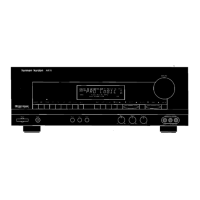
